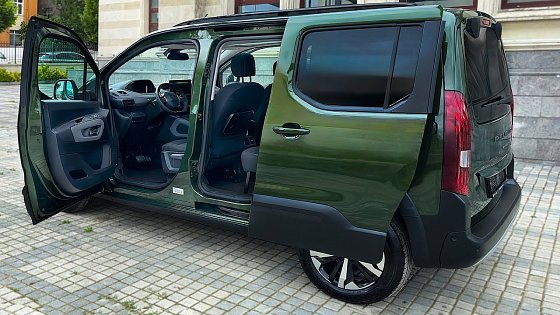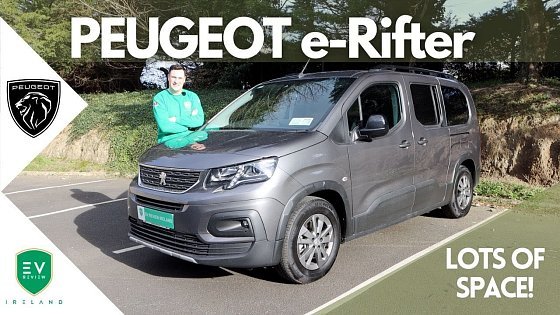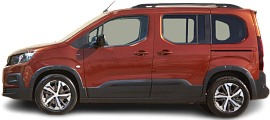Video Summary
The Peugeot e-Rifter is a van/high-roofed station wagon with many faces. There are two different body lengths, as well as transporter and passenger car variants. This car has minimal changes for different brands, including Citroen Berlingo, Opel Combo, Fiat Doblo, Peugeot Partner or Rifter (Rifter is the passenger car version), and Toyota ProAce Verso City.The Peugeot Rifter is unique in its group, with the typical Peugeot face. It is more crossover than the others, and the transporter variants will continue to have internal combustion engines or an e-drive, although the passenger car versions are only offered as all-electric versions.
The motor has a maximum of 100 kW or 136 hp electric drive, driving the front wheels. The battery on the vehicle floor is 50 kWh. It is charged via alternating current, using a type-2 plug at 11 kW, which is three-phase. The CCS plug has 100 kW charging power, taking half an hour to charge to 80%. However, these numbers were not always achieved. Household sockets take about 31 hours.
The vehicle has a tow bar, but the trailer load is 750kg. The maximum draw bar load is 50kg.
There are two lengths, with the L2 being 4.75 meters.
Both lengths can be ordered as five or seven-seaters. The five-seater has a 1050L trunk, expanding to 2700L when seats are folded. To fold the seats, the front seat must be moved forward a little to fold the back seats flat. The loading area is made of plastic. There are attachment points for a safety net or cargo, and 3m of loading length.
The side sliding doors allow easy access.
The price starts at 41,240 euros for a version before discounts. This particular version with various extra packages costs 45,840 euros.
There is plenty of space at the front, but the seats were cut a bit narrow and are short. The car has many storage options, including the center console and the glove compartment, upper storage compartments and cup holders. The cup holders are small, and might only suit an espresso paper cup.
The digital cockpit is easy to use in the i-Cockpit. The display can switch between power level/battery level and navigation screens. Android Auto and Apple Carplay work via a cable.
The powertrain includes the "normal" driving style, or settings for power and economy. The motor power in normal mode is up to 80kW and at ECO it’s just 60 kW. During one test, the car achieved about 17kWh per 100km, which is under the WLTP specifications.
It doesn’t achieve one-pedal drive. There are different levels of recuperation which can be achieved by using the B gear, but requires using the brakes when decelerating.
There was some hopping, especially when unloaded, and some parts are indifferent, making for a not so perfect ride.







